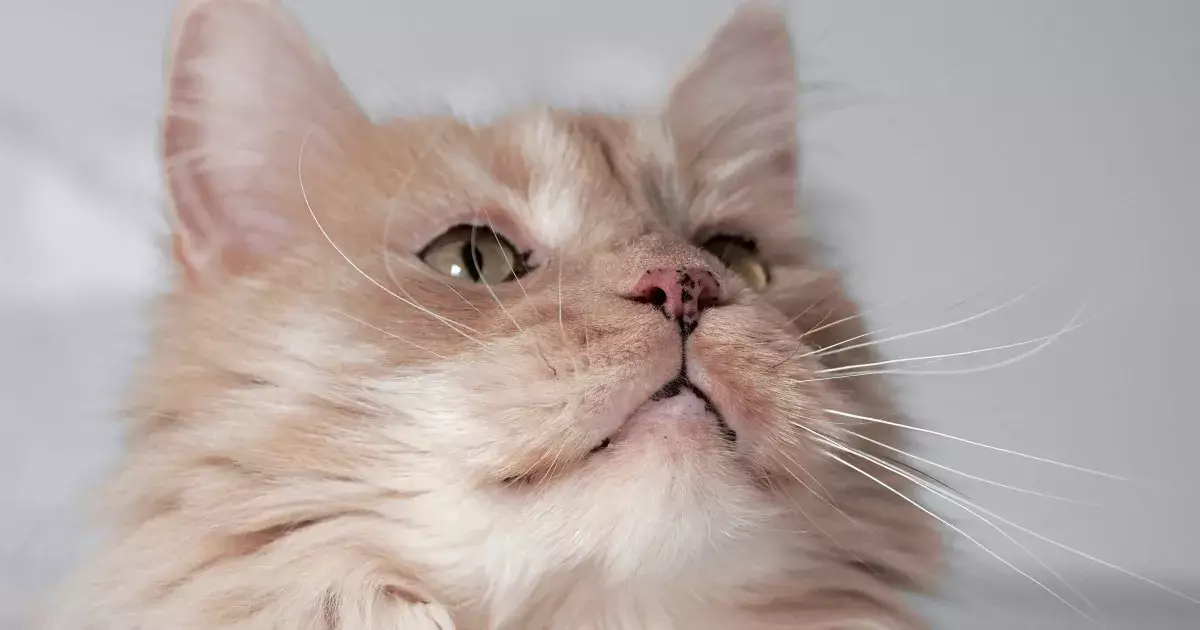Lentigo is a prevalent skin condition found in cats, characterized by the emergence of small, flat, brownish spots, reminiscent of freckles. While these spots can often be a cause for concern among pet owners, particularly when they appear on sensitive areas like the lips or eyelids, it is essential to grasp the nature of lentigo and its impact on feline health.
The defining features of lentigo in cats include the appearance of small, circular or irregularly shaped dark spots that vary in size from tiny pinpoint marks to larger spots a few millimeters in diameter. Typically, these spots are most noticeable on the nose, around the lips, on the eyelid edges, and even on the ears. While the condition is innocuous from a health standpoint, it tends to become more prevalent as cats reach maturity, particularly in those that are older. It is important to note that lentigo does not lead to discomfort; rather, the spots appear solely as a cosmetic alteration in the feline’s appearance.
Despite their typically harmless nature, pet owners should remain vigilant for any changes in the spots. Rapid growth, alterations in texture, or any symptoms like irritation warrant a veterinary evaluation. Such changes could indicate a different dermatological issue that may require more comprehensive intervention.
Although the precise causes of lentigo in felines remain somewhat elusive, genetics likely play a significant role in the manifestation of the condition. Certain breeds and color patterns appear more predisposed to developing lentigo, with cats displaying orange, ginger, calico, and tortoiseshell hues being particularly susceptible. This heightened occurrence may stem from the visibility of pigmentation against lighter or thinner hair coats.
It is a common misconception that lentigo results from sun exposure, drawing parallels with human freckles. However, research suggests otherwise, as the condition does not inherently relate to ultraviolet (UV) radiation’s effects. Interestingly, some experts propose that the genetic makeup of ginger cats might influence increased melanin production, explaining why certain breeds exhibit lentiginous spots.
If you suspect your cat may have lentigo, an evaluation from a veterinarian is advisable to confirm the diagnosis. The vet will conduct a focused examination of the affected areas, potentially employing a dermatoscope—a specialized magnification tool—to scrutinize the spots in greater detail. Additionally, they may inquire about the cat’s medical history and any recent changes in the appearance of the spots.
In some instances, to eliminate the possibility of other skin conditions such as skin infections, fungal infections, or malignancies like skin cancer, a biopsy could be recommended. This slight yet vital procedure allows for an in-depth analysis of the affected area, ensuring a correct understanding of the nature of the pigmentation.
One of the key considerations regarding lentigo is that treatment is generally unnecessary in benign cases. Rather than pursuing aggressive interventions to alter or remove the spots, emphasis should be placed on monitoring their evolution. Observing for any abnormal changes is paramount, as the presence of significant modifications could signal potential underlying health issues that require further attention.
While some pet owners may be tempted to explore cosmetic procedures to mitigate the appearance of lentigo, it is essential to approach this idea with caution. Veterinarians frequently advise against pursuing such treatments due to their potential risks, which may overshadow the cosmetic benefits. Embracing the uniqueness of your cat’s appearance can foster a positive attitude towards their condition.
Nevertheless, regular veterinary check-ups should remain a cornerstone of feline healthcare. These wellness evaluations provide an opportunity for early detection of any concerning developments, reinforcing the idea that attentive care is a vital component of keeping your pet healthy and happy.
Lentigo is primarily a cosmetic condition in cats, offering little to no threat to their overall well-being. Understanding its characteristics, potential causes, and management options empowers pet owners to navigate this common feline dermatological issue effectively. By maintaining a watchful eye and regularly consulting with a veterinarian, you can ensure that your cat remains a vibrant and healthy companion, regardless of any unique physical features they may have.


Leave a Reply